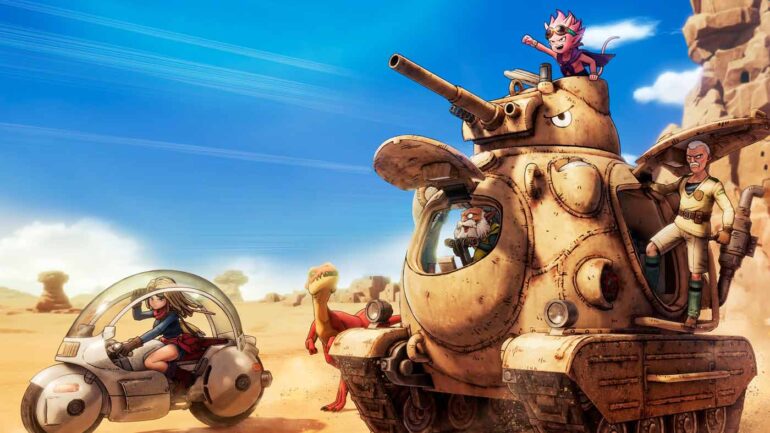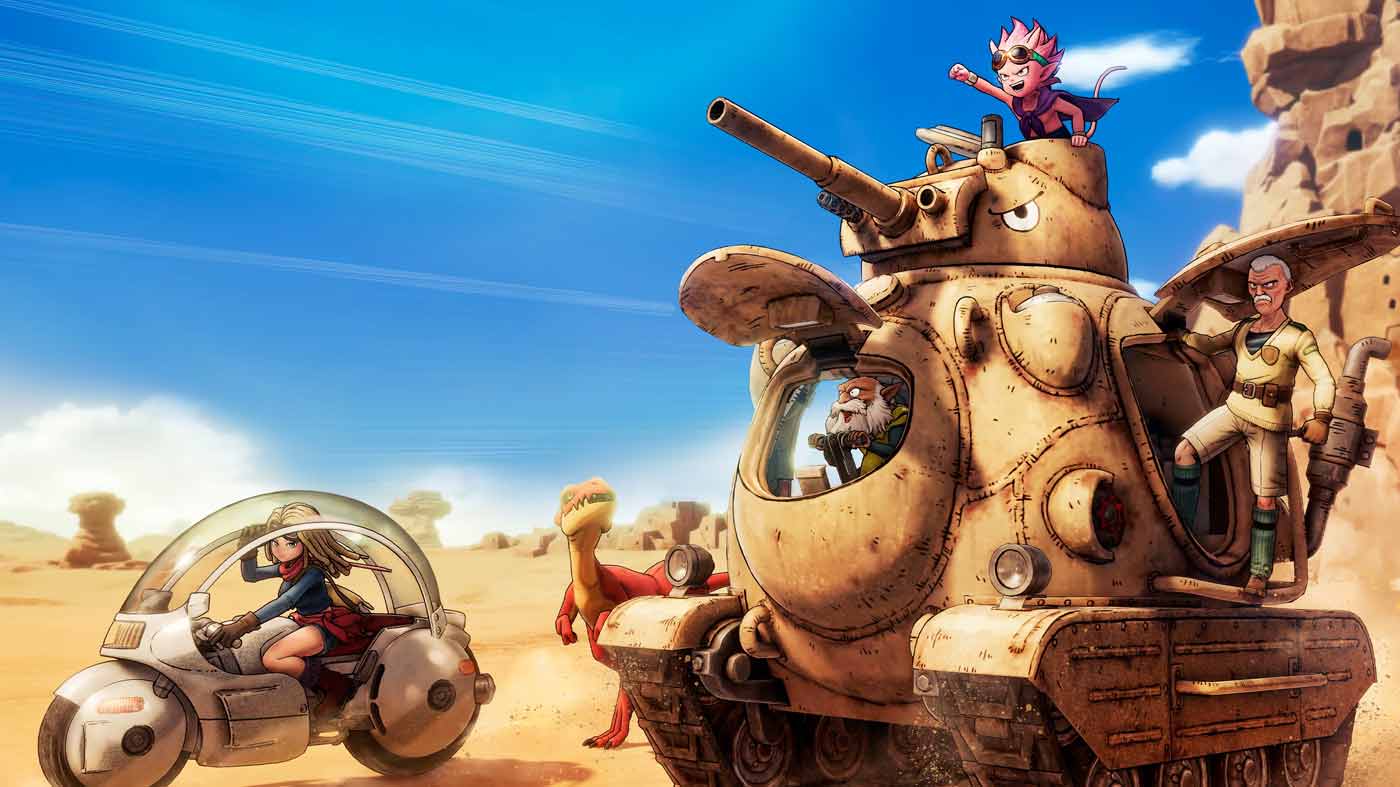To level with you from the jump, I’m not sure how any anime kid born in the 90s could possibly approach Sand Land with any real semblance of objectivity. Akira Toriyama’s work defined generations and genres, a singular point of influence so crucial to the definition of taste, to the fabric of nostalgia, that the pitch of “what if you could play a game set in the pages of his art” is immediately, and understandably, disarming. Sand Land, adapted from the manga and anime series of the same name, delivers on that pitch with varying degrees of success, a charmingly clumsy romp with eyes bigger than its stomach but an admirable appetite all the same.
Sand Land plops you into the shin-high boots of Beelzebub, Prince of Demons, son of Lucifer, veritable little stinker. Running a Robin Hood adjacent gig in the outskirts of Sand Land, a once thriving continent hardened into a desert wasteland following a devastating war, Beelzebub and his demon gang are lifting what water they can from the far-reaching clutches of the Royal Army. An occupying force of vaguely nationalist shitheads, the army hoards Sand Land’s remaining resources while disparate towns and settlements cling to life under its harsh sun.
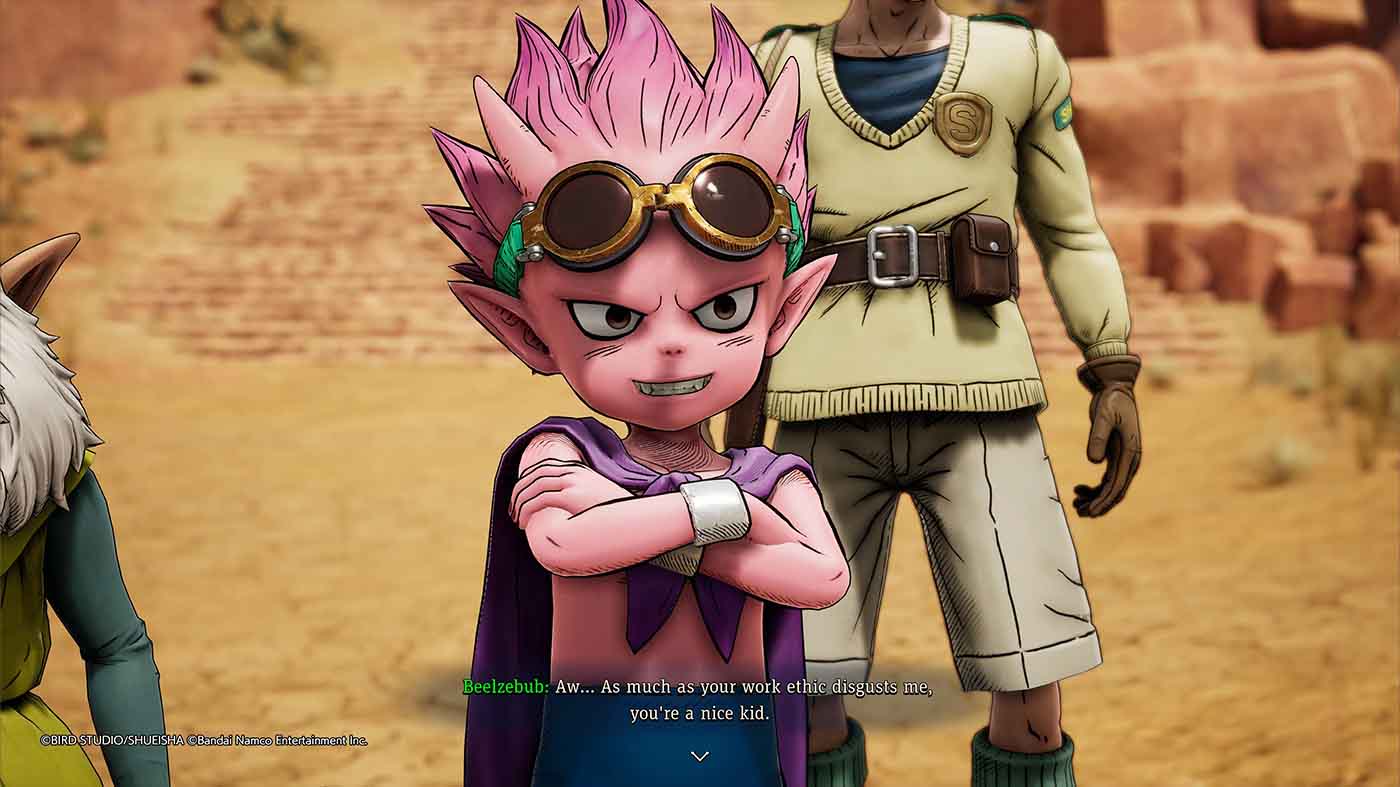
Life, and rebellion, find a way though, and soon Beelzebub, along with his curmudgeonly old demon mate Thief, are enlisted by Roa, a local sheriff on a last-ditch journey south in search of the Legendary Spring, a water source said to hold the secret to Sand Land’s potential restoration. Toriyama’s iconic art style contrasts nicely with the simmering bleakness of Sand Land, Beelzebub’s quest taking him through an assortment of striking locales and an affable supporting cast while never failing to chew on the meatier concepts baked into the game’s themes.
To sweeten the pot, Roa gifts Beelzebub a gaming console (much to the chagrin of Lucifer, who despite being king of demons is also a “one hour a day in a well-lit room, kiddo” kind of dad). It’s a cute moment, the promise of a world-altering adventure paling in comparison to the new console he has waiting at home, but it’s also indicative of Sand Land’s approach to design. From the baseline open-world and vehicular combat, it piles mechanics and systems with joyful, messy abandon – beat-em-up on foot encounters, perspective-shifting platforming, forced stealth sequences, deep customisation, and a whole bunch of quests. There are even a few old faithful radio towers dotted around the humbly sized but inviting map.
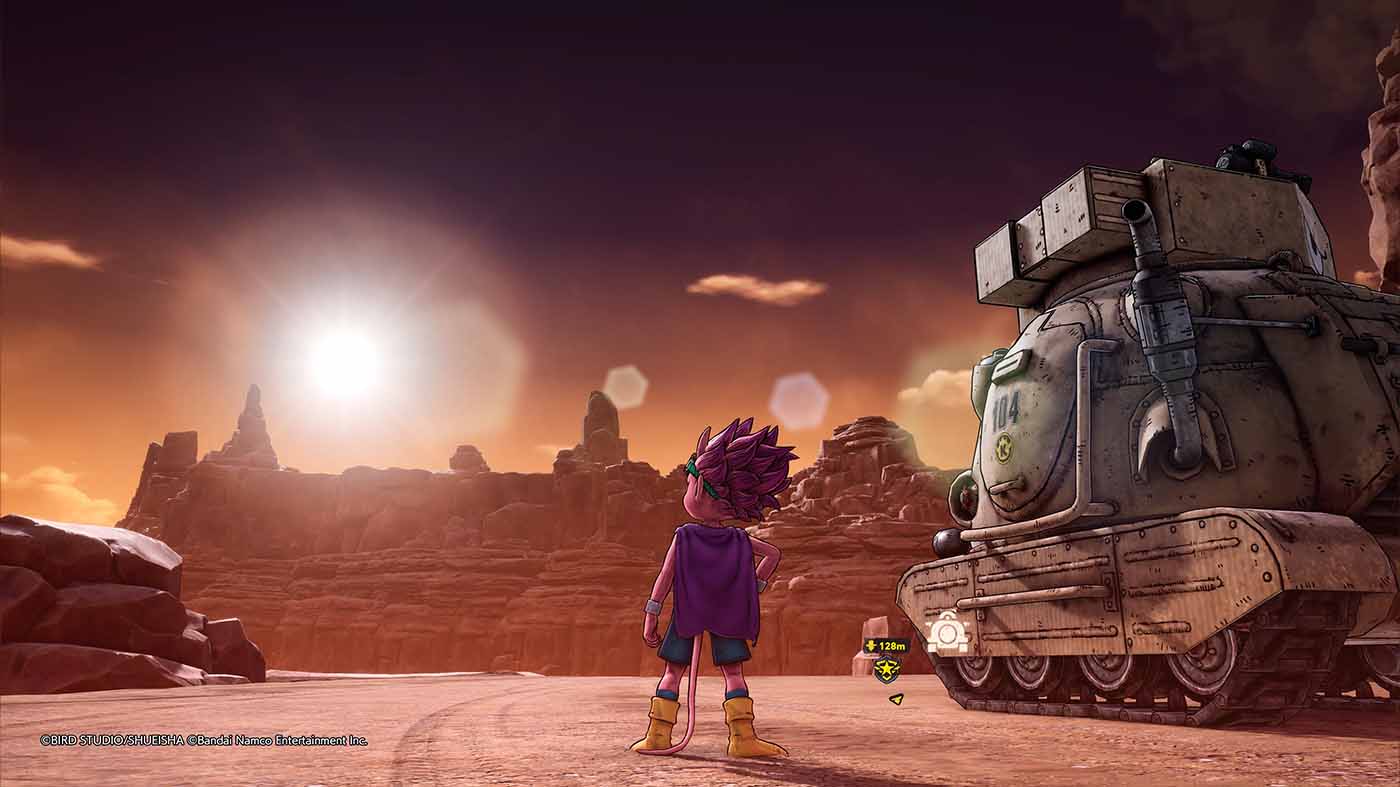
It’s a minor miracle it all feels as breezy as it does, the potential bloat of its systems teetering on the edge of Content but never toppling. This is probably in large part due to Toriyama’s designs running a near-constant interference on even the most banal tasks, but it’s also because Sand Land is forgiving, welcoming, and endlessly warm to the touch. Beyond its aesthetic markers, it’s difficult to say it is the best at any of the hats it wears across its twenty-odd-hour adventure, but the effort feels sincere and the execution almost always in good faith. It badly wants to be like the games that inspired it, and there are worse design impulses to follow.
To get the grit out of the way, the stealth sections are kind of a pain; occasionally a party member will need to sneakily scope out a location or loot supplies using a rudimentary crouch, shuffle, cone of vision-avoiding set of tools. It’s not bad, but it’s not all that fun either, the trigger points for guards and paths often being a little too loose but, at least, rarely punishing. Likewise, the typically smooth UI could be a little more forthcoming in its crafting material information. I once lost a solid ten minutes to roaming settlements looking for a material with nothing but the “occasionally found at workshops” to go by.
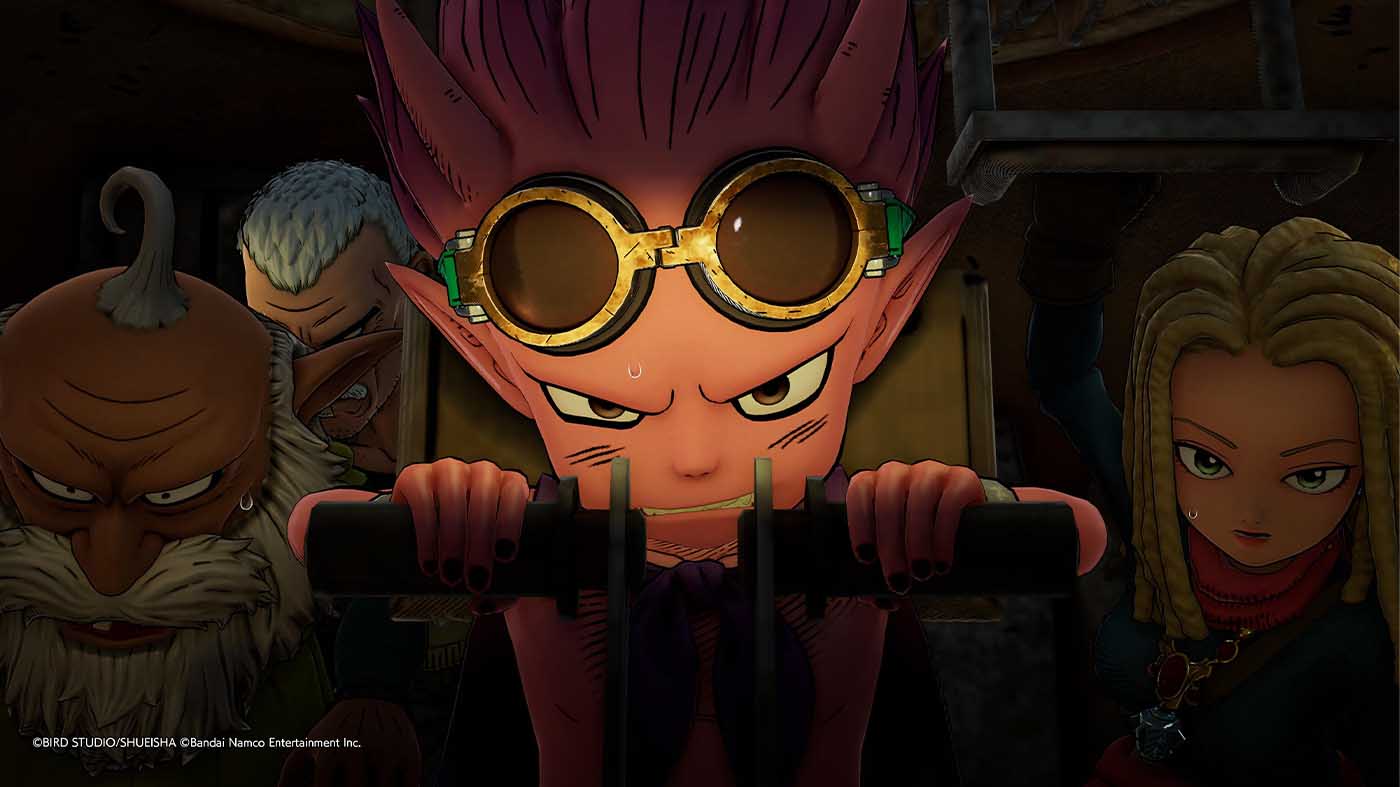
It was mildly irritating but if only for how much these pain points stood out against the prevailing Sand Land experience, which is one of ease and small joys. Given the nation’s proclivity for conflict, the land is littered with war machines to pilot and do battle with. Beelzebub’s roughly half a dozen arsenal includes a portly tank, a legs for day jumping bot, and a fierce speedy bike to name a few, each required for different elements of the map. Sinking sands need to be swiftly crossed, large gaps leapt over, you get the idea. Carried in capsules for immediate switching and open-world use, this collection of metallic oddities is Sand Land’s traversal and combat backbone.
And they’re a blast. Controlling the tank feels like piloting a Dalek, top and bottom halves operating independently for goofy but useful manoeuvrability as you cycle through a canon and minigun rotation, each methodical reloading timed to suit the other. The bike blasts the world wide open, whipping along dunes and craggy cliffsides using the overdrive boosters found on all units, on cool down during combat but unlimited while exploring to incentivise pointing in a direction and just letting loose. The other bots are less inspiring, but each can be radically overhauled with customisable parts, each machine broken into component elements in the workshop, those individual pieces themselves are also upgradable, discoverable, and craftable.
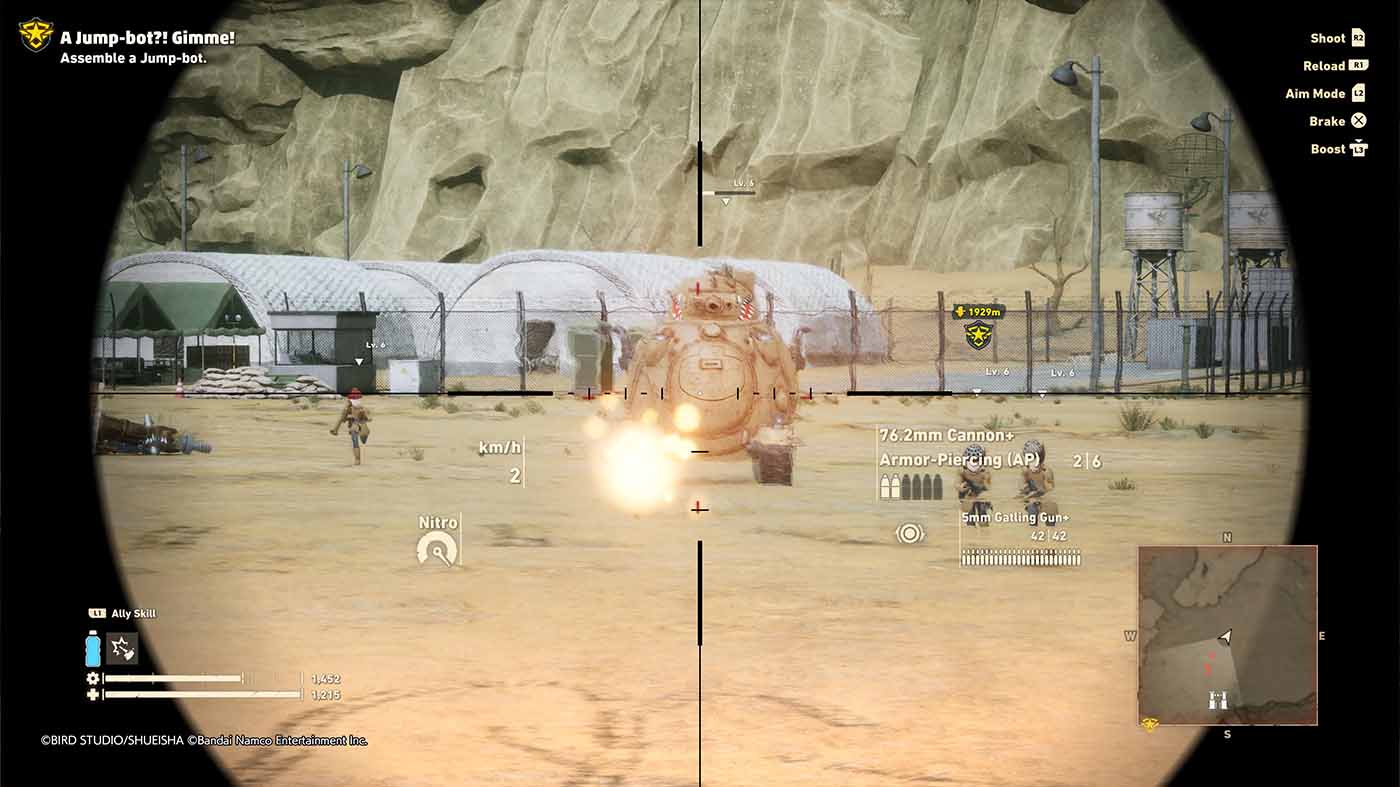
Materials and pieces are farmed in the open world, hunting stray packs of colourful dinosaurs and roaming gangs of bandits and army men alike. You’re just as likely to engage these foes, and several other key story moments, on foot though, with Beelzebub’s demonic powers used in flashy, if simple, melee combat. Light and heavy attacks, a nimble dodge, a skill tree to fill out that enables stronger blows and a whole separate one for passive and active companion abilities, Sand Land hits all the notes. Unlike the stealth though, these moments are fun and reliably well-paced, each time a clobbering was required feeling narratively satisfying and mechanically sound.
Sand Land is also not particularly shy about its themes and ideas, happy to smack you around the ears if it feels like you’ve not been paying attention. You can grok it immediately; the tutorial mission for vehicle combat is framed as a sepia-toned flashback to the war that devastated the land, the final horrific act of the conflict serving as your last checklist item to cross out. Sand Land knows its tanks and bikes and mechs are all fun to play with, but it’s also keenly tuned into the story it wants to tell, tethering combat to theme through a series of small cup checks. Characters often exclaim how impressive it is that you cleared a small army without killing anyone, stealth “kills” are actually just scaring the guard into fainting, and Roa’s role in the party is to always remind Beelzebub that all this fun is built on the graves of war.
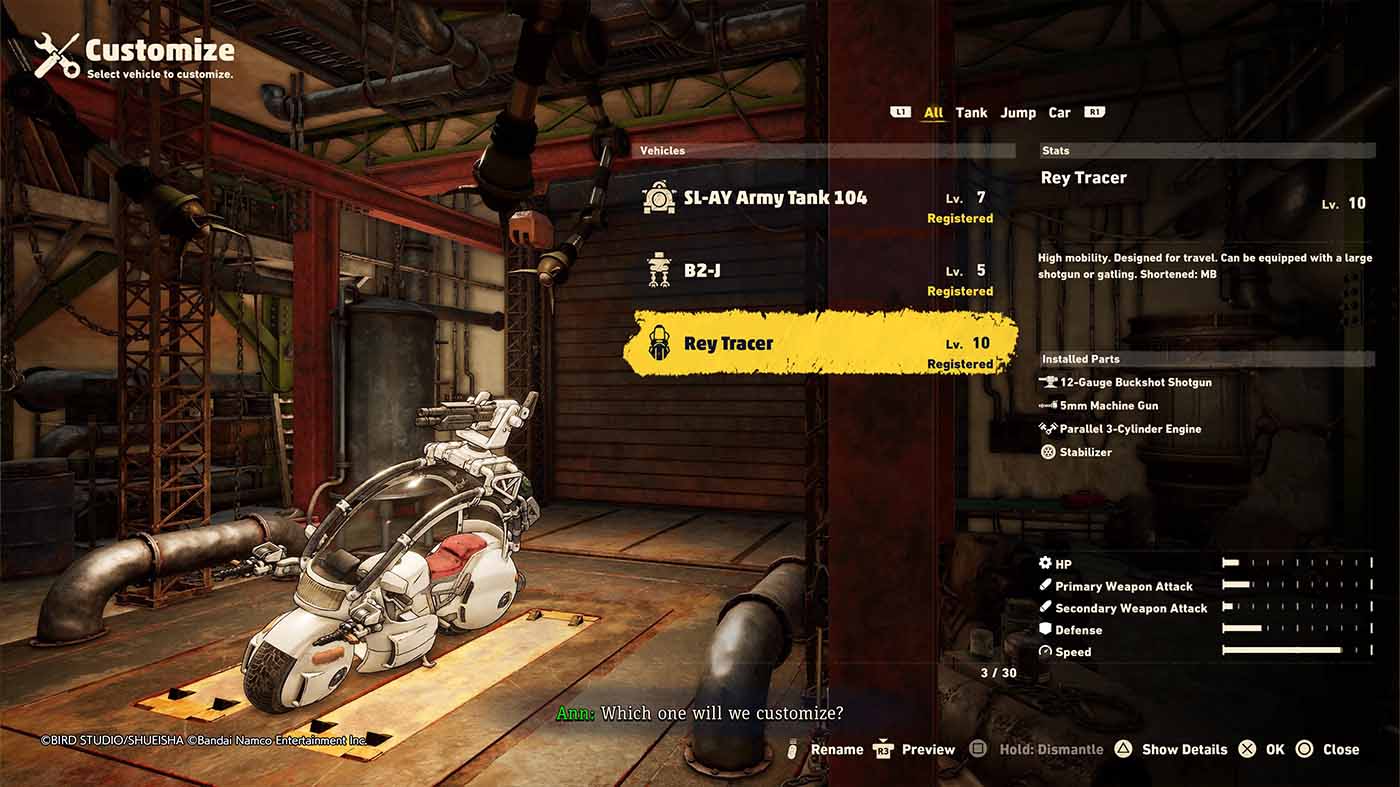
Is it a bit silly to think your arsenal of missiles didn’t kill someone during that last mission? Sure, but a core part of Sand Land’s appeal is its invitation to enter a world in which that’s possible and even necessary. The end of the world for Sand Land was a mere fifty years ago, lending some surprising weight to Roa and Thief’s occasional bouts of forlorn reminiscing and eventual plot revelations. The story can feel somewhat disjointed at times, its thematic and character strength stumbling over odd pacing and lurching between scenes rather than smoothly flowing, but the thrust of it is frequently engaging or, at the very least, entertaining.
All of this is wrapped in presentation that borders on magical. Toriyama’s art is almost perfectly translated into an explorable space in Sand Land, as if the world just beyond the frames of his books had spilled out and invited you to dick around in it. There’s a smattering of the hard lines and grit lost in the translation from the original work with Sand Land but it’s a minor gripe, the achievement of Sand Land, the place, and the expressive character animations all but papering over any purist complaints. It makes for a game that is striking to look at in trailers but doesn’t reveal the real breadth of its beauty until you’re sitting down with the thing, the ability to swing the camera around and move Beelzebub through these spaces without it breaking the immaculate art and vibes being the crowning achievement for Sand Land.
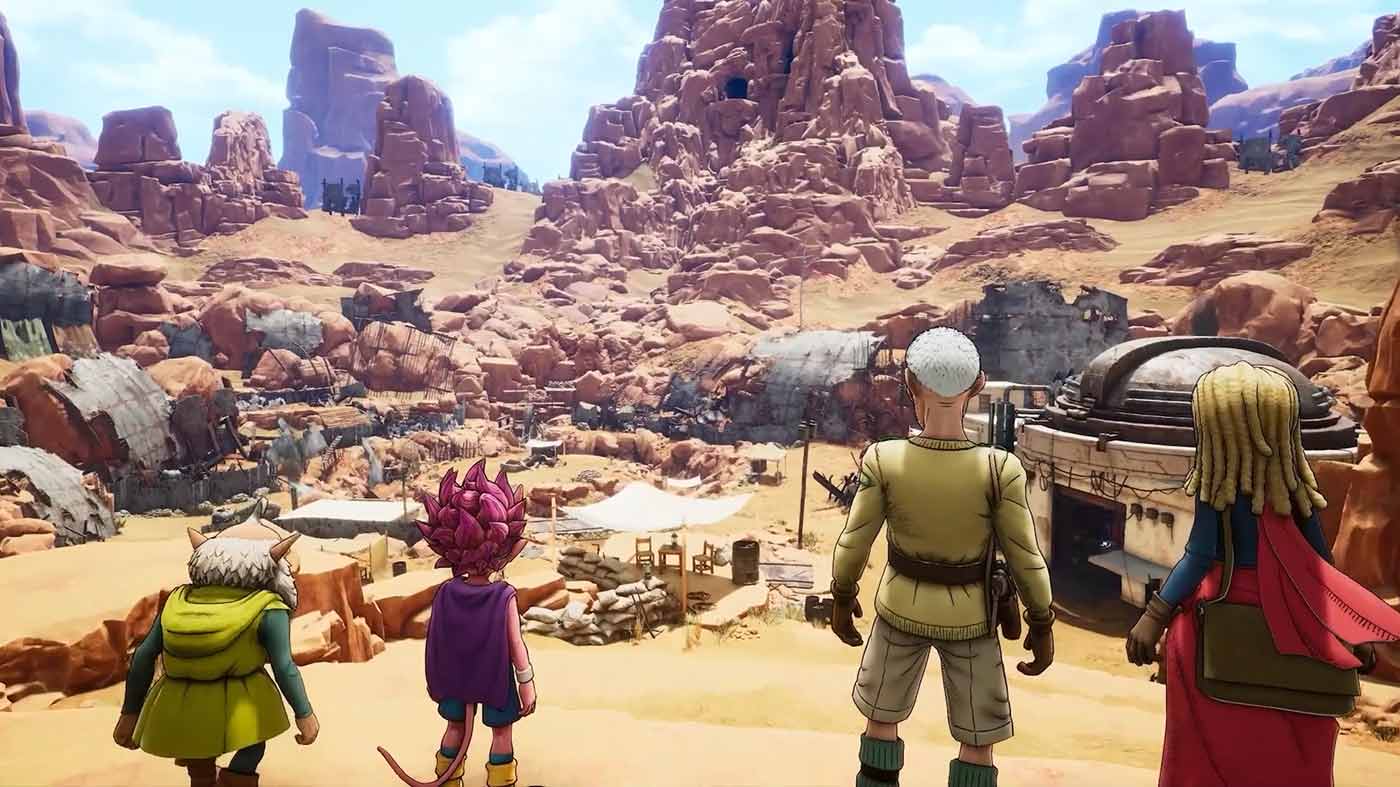
In the face of this evocative work, the mechanical and pacing fumbles feel distinctly less important, their severity already dulled by the game’s overall quality and likely nullified entirely for some by its relentless charm. It is, to my mind, the quintessential 7/10 video game experience, the kind of good time that makes a man in his 30s ache with warm and, as of recently, bittersweet nostalgia. But in many ways, I’m not sure Sand Land is meant for me, it’s meant for the new anime kid with a PS5 and 30 hours of free time to do the side quests, to build up the towns and track down the collectibles all while becoming slowly enamoured with the work of a man who has left us all too soon.
Or maybe Sand Land is for both of us, the past and present generations, taking a moment over a cool video game to say hey, thank you Akira Toriyama. I can think of no better goodbye than to inhabit one of his boundless, beautiful worlds.


